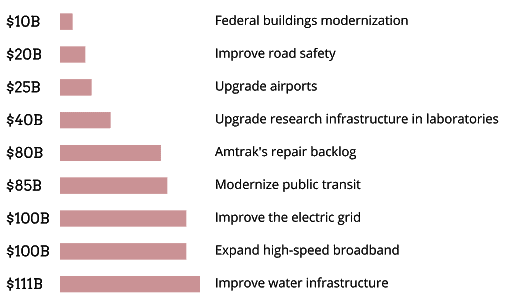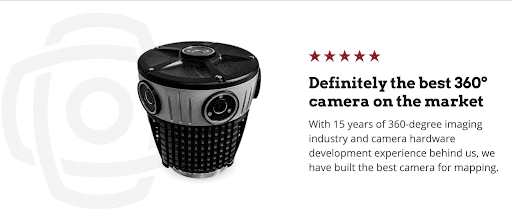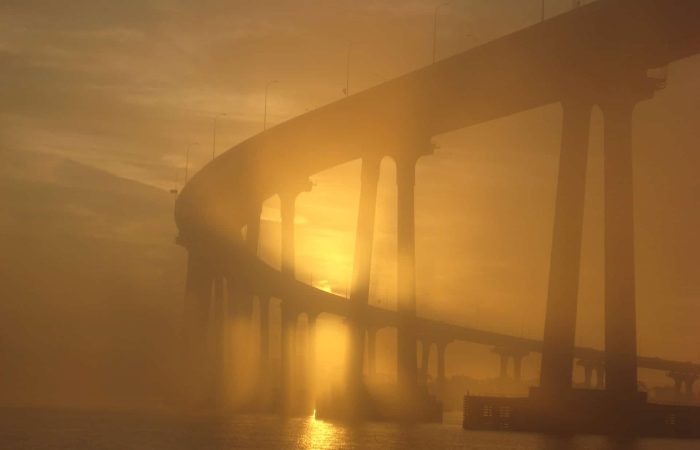How Biden’s new American Jobs Plan can benefit from one mobile mapping tool
American President Joe Biden just proposed a nearly $2 trillion dollar infrastructure and jobs bill, claiming it is the “most resilient, innovative economy in the world.” The media is calling it the American Jobs Plan, as many of the items in the extensive list would simultaneously create more jobs while also confronting infrastructure issues.
Some of the goals set forth in the proposal include fixing 20,000 miles of roads and 10,000 bridges (including 10 of the most economically significant in the country), eliminating lead pipes, upgrading airports and rail infrastructure, and modernizing federal buildings. The bill also aims to fight climate change, introduce cleaner energy sources, and improve racial equality.
Mosaic is confident that our 360-degree mobile mapping camera with 3D capabilities, the Mosaic 51, can assist the federal government, state governments, and private corporations in many of these issues.

The report details many more areas that address topics such as electric vehicles, climate-related disasters, inland waterways, public housing projects, VA hospitals and clinics, caregivers (a huge part of the overall budget distribution), and preventing future pandemics.
We will focus on the following 10 to highlight the versatility and depth with which the Mosaic 51 can tackle many issues singled out in the American Jobs Plan.
10 Points of Biden’s American Jobs Plan Which Need the Mosaic 51
Here is a quick rundown of the top areas Biden’s infrastructure plan hopes to target that would benefit greatly from the Mosaic 51:

1. $10 billion on federal buildings’ modernization
2. $20 billion to improve road safety
3. $25 billion to upgrade airports
4. $40 billion to upgrade research infrastructure in laboratories
5. $80 billion for Amtrak’s repair backlog, improvements to existing routes, and expansion
6. $85 billion to modernize public transit, doubling federal funding for public transit
7. $100 billion to improve the electric grid
8. $100 billion to expand high-speed broadband
9. $111 billion for water infrastructure, including $4 billion to eliminate all lead pipes and $56 billion to modernize America’s drinking water, wastewater, and stormwater systems.
10. $115 billion to modernize bridges, highways, roads, and main streets that are in most critical need of repair
How can a 360-degree camera solve the infrastructure bill?
While the bill is not yet final, it will need Republican support to pass through the Senate. Alternatively, Biden could pass it through a means of reconciliation, a process which would only require Democratic support. We can still only speculate. In the meantime, we can start to picture a world where the bill has passed, and hundreds of private and public groups need the Mosaic 51.
Gather information more effectively and efficiently
Much of the bill will require gathering significant data concerning the current conditions of highways, roads, bridges, utilities, and railways. This means collecting data covering a wide expanse of land, hundreds of thousands of miles in total. Gathering the data necessary to proceed to the following steps will also take untold manhours.
The Mosaic 51 was designed and built to solve all of these issues. As a 360-degree mobile mapping camera, it is capable of covering vast swaths of land in short periods of time. This reduces the manpower typically used in more traditional mapping techniques or for smaller-scale projects.
The two GPUs built into the camera do all the computing within the camera. Therefore, there is no need for any other computer, power station, or workstation within the vehicle. This cuts down on additional manpower and energy consumption.
Check out more about how the Mosaic 51 stacks up against other mobile mapping cameras here.
Guaranteed dependable, hassle-free operations
The United States covers many environments and climates, from hot and arid to cold and wet. Many of the roads, bridges, dams, and waterways that must be surveyed are not on nicely paved city streets. They are on rugged mountain roads and narrow country lanes pitted with potholes.
With its industrial-grade construction and durability, the Mosaic 51 can withstand extremely hot and cold temperatures. It is also resistant to water and dust, with an IP67 rating. This is one of the most durable cameras on the market, ready to take on any challenge.
To quote the USPS motto: “Neither snow nor rain nor heat nor gloom of night stays these couriers from the swift completion of their appointed rounds.”
Maybe we’ll modify this for our next Mosaic motto.
To learn more about our ‘made-to-get-dirty’ camera, request information here.
Provide unsurpassed HD images

For many years, designers and creators of mobile mapping cameras were only focused on getting the most accurate geospatial data. They often ignored the original function of a camera—to present real-life images through photographs or videos. While image quality has improved greatly, it still lacks the finesse necessary to bring out true HD quality results. With six noise-free lenses combined for 12K resolution, it beats out every other camera on the market.
It preserves nearly all of the dynamic range, even in harsh lighting, and eliminates artifacts from different image sensors. This exposes the scene differently, offering a unified and consistent image.
This will greatly assist those conducting real estate or utility assessments, as they can see every last crack, chipped paint, and telephone pole in danger of neighboring trees.
Check out these articles here and here to learn about how real estate asset inspectors and utility inspections will benefit from Mosaic 51.
Provide better insight for decision-makers
A man is only as good as his tools
Emmert Wolf
Even with the best workers, companies’ intentions are useless without the best tools to understand their situation better and create solutions.
Possessing the proper tools (like the Mosaic 51) will prepare and arm decision-makers with the latest, most accurate data on road conditions, road signs, and logistics issues.
By staying up-to-date with optimally gathered data, these decision-makers can make better predictions about the work and budgets needed. They can forecast for the future as they see the developing trends from comparative analysis.
To see how the Mosaic 51 increases efficiency for road inspection, maintenance crews, and logistics companies, visit these articles: here or here.

Reduce costs along the way
Two trillion dollars is quite a lot! We can assume that the companies selected to implement Biden’s ideas will need to have a lot of solid information in order to stay within budget while still offering the best services possible.
Due to its compact setup, the Mosaic 51 only needs one operator within the vehicle, compared to 2 to 3 with a normal mobile mapping camera. The camera can run all day, capturing data on one storage unit. The built-in GPU has all of the necessary computing power. While the data storage is an on-board hot-swappable USB 3.0 storage unit.
To learn about all of the other exciting ways that the Mosaic 51 is helping industries and communities around the world, head over to our solutions page.
Where will the American Jobs Plan plan go from here?
It is too early to tell, but certainly, parts of the bill will pass, and many new infrastructure projects will begin. For many sectors, this will mean gathering data about the current infrastructure conditions and determining how to best enhance them.
We at Mosaic know that when the time comes, our camera will be up for any challenge.



